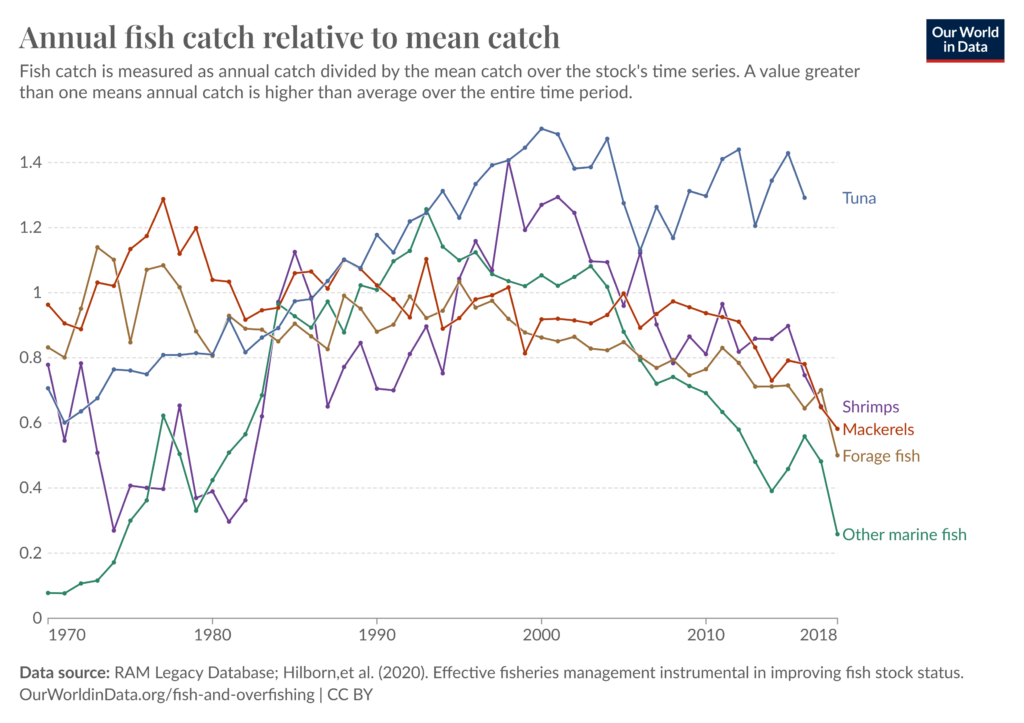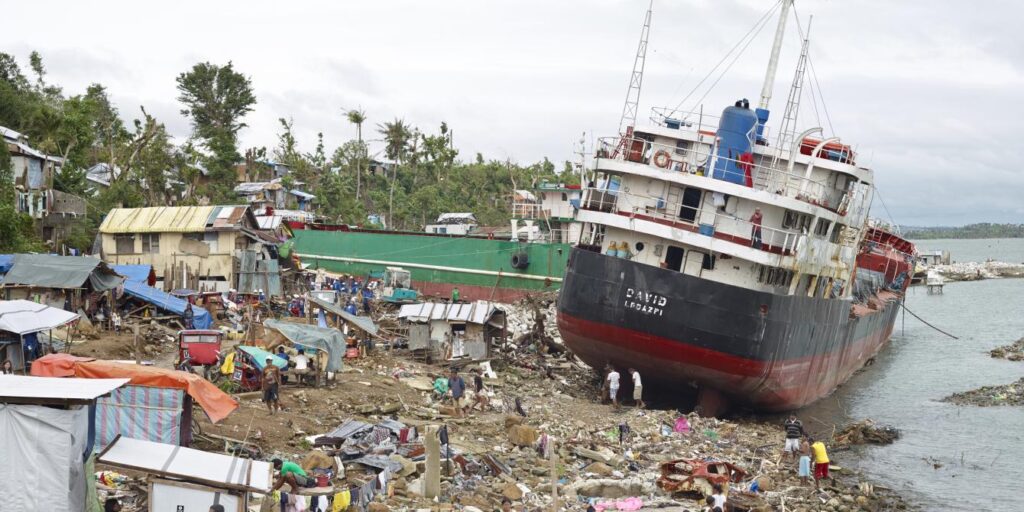These 10 human activities that affect the environment lie at the heart of escalating climate change issues. The science is conclusive. Human-driven carbon dioxide emissions and ecosystem disruptions are reshaping our natural, economic and social systems.
As we alter natural habitats, burn fossil fuels and overconsume resources, we see far-reaching impacts threatening global food security, damaging infrastructure, harming human health, undermining biodiversity and leading to environmental degradation. In Asia, for instance, changing weather patterns contribute to crop losses that threaten food security. Yet, no region is immune. From Japan to Bangladesh, Germany to Mexico, all nations feel the strain.
1. Deforestation and Habitat Destruction
Deforestation claimed roughly 220,000 square km of forest each year between 2001 and 2023 – a 12% decrease in global tree cover. Logging, agricultural expansion and infrastructure projects are removing these vital carbon sinks. For example, in Indonesia’s tropical forests, vast plantations for palm oil displace endangered species and alter regional climates.

As tree cover vanishes, biodiversity declines, temperatures rise and local farming communities suffer. These changes have negative environmental consequences, ultimately impacting the global economy, reducing nature-based services and leading to health concerns.
2. Fossil Fuel Consumption and Greenhouse Gas Emissions
Burning coal, oil and natural gas accounts for over 75% of global greenhouse gas emissions. Greenhouse gases trap heat and raise global temperatures. Earth’s average temperature has increased by about 1.1°C since the late 19th century.
Rising seas and extreme weather could become the norm without a shift to renewable energy. Clean energy investments and phasing out subsidies for fossil fuels can help slow this trend.
3. Industrialisation and Air Pollution
Heavy industries release pollutants like sulphur dioxide and nitrogen oxides, reducing air quality and leading to various respiratory health issues. According to the WHO, poor air quality contributes to 7 million deaths annually worldwide.
In rapidly industrialising economies, such as India and Bangladesh, air pollution has reached critical levels that significantly burden the economy and residents’ well-being. Stricter regulations, cleaner production methods and advanced filtration technologies can help create healthier urban and rural environments.
4. Unsustainable Agricultural Practices and Soil Degradation
Monocultures, excessive tilling and chemical fertilisers degrade soil fertility. Roughly one-third of the world’s soil is moderately to highly degraded. This reduces crop yields and threatens food security, particularly in vulnerable regions like South Asia.
As productivity falls, rural communities may face economic losses and malnutrition. Regenerative agriculture – using crop rotation, cover crops and organic fertilisers – can restore soil health, increase yields and help ensure stable food supplies.
5. Water Pollution and Contamination
Industrial effluents, pesticides and fertilisers wash into waterways, contaminating drinking supplies and marine habitats. The World Bank estimates that 80% of wastewater globally is released untreated. Toxic substances harm aquatic life and human health.
In Bangladesh, rivers and groundwater are largely contaminated, and 60% of the population only has access to unsafe drinking water. The country’s water issues could cost the economy up to 6% of its GDP by 2050. Enhanced wastewater treatment, stricter waste disposal regulations and advanced filtration systems can safeguard public health and ecosystems.
6. Overfishing and Marine Ecosystem Depletion
Global fish stocks are under severe pressure, with about 34% of fisheries operating at unsustainable levels. Large-scale fleets, bycatch and illegal fishing are primarily the culprits. These practices disrupt marine food webs and jeopardise coastal livelihoods. For example, Japan’s seafood production has declined 66% since 1985 due to overfishing.

Adopting responsible fishing methods, implementing quotas and establishing marine protected areas can help restore balance and ensure a long-term protein source for human beings.
7. Waste Generation and Management
Worldwide, the human population generates over 2 billion tonnes of municipal solid waste annually and less than 20% of it is recycled. Most of this waste goes into landfills, which can spread toxins into soil and water. Additionally, ocean plastic pollution is a growing concern, harming marine life and entering our food chain.
Improving recycling systems and investing in composting are viable options. However, reducing consumption and shifting to a circular economy are the primary pillars of tackling this issue.
8. Urbanisation and Habitat Fragmentation
Urban areas occupy 3% of Earth’s surface yet account for 70% of the world’s emissions. They are hotspots for energy use and transportation. Additionally, as cities expand, roads and buildings fragment habitats. This causes green spaces to disappear, and species lose essential corridors for migration and breeding. Fragmentation limits biodiversity and degrades ecosystem services – like pollination and water purification – that support human life.
Integrating green roofs, parks and ecological corridors into urban planning can mitigate these impacts. Sustainable city design ensures that development doesn’t come at the cost of environmental resilience.
9. Consumption and Resource Depletion
We are consuming natural resources at a much higher rate than they can naturally regenerate. Furthermore, our consumption strains finite resources like minerals, timber and fresh water, which are critical for modern life. According to UNEP, global resource extraction has tripled since 1970.
This intensifies inequalities as richer nations consume disproportionately, leaving poorer ones more vulnerable to scarcity. Responsible consumption and improved efficiency are critical to ensuring equitable distribution. Redirecting investment toward sustainable materials and rethinking product lifecycles can maintain economic growth while preserving natural capital.
10. Global Warming
Arguably, the most impactful of the 10 human activities that affect the environment is increasing greenhouse gas concentrations. This drives global warming and alters the planet’s basic systems. This is leading to an increased frequency of droughts, storms and floods. The IPCC warns that extreme weather could cost the global economy trillions per year by 2050.

Industries, from agriculture to shipping, are at risk, affecting jobs and global supply chains. Tackling this issue requires a worldwide effort, and international agreements like the Paris Agreement set crucial milestones for countries to work towards. Meeting these deadlines requires a robust array of techniques, from policy incentives to climate finance tools.
Collective Action is Necessary
Each of these 10 human activities significantly affects our environment and accelerates climate change. Unevenly distributed, their negative environmental impacts jeopardise global well-being, stability and economic prospects. Now is the time for decisive action. The path forward requires international cooperation and a united effort.
Eric Koons
Writer, United States
Eric is a passionate environmental advocate that believes renewable energy is a key piece in meeting the world’s growing energy demands. He received an environmental science degree from the University of California and has worked to promote environmentally and socially sustainable practices since. Eric has worked with leading environmental organisations, such as World Resources Institute and Hitachi ABB Power Grids.
Eric is a passionate environmental advocate that believes renewable energy is a key piece in meeting the world’s growing energy demands. He received an environmental science degree from the University of California and has worked to promote environmentally and socially sustainable practices since. Eric has worked with leading environmental organisations, such as World Resources Institute and Hitachi ABB Power Grids.















